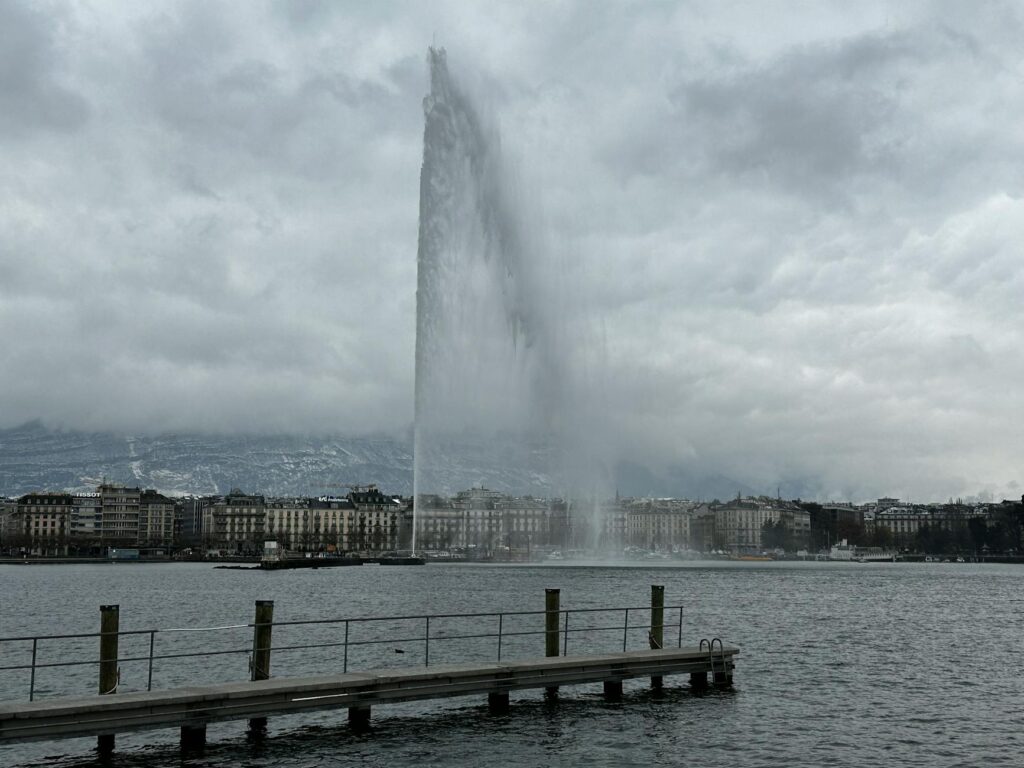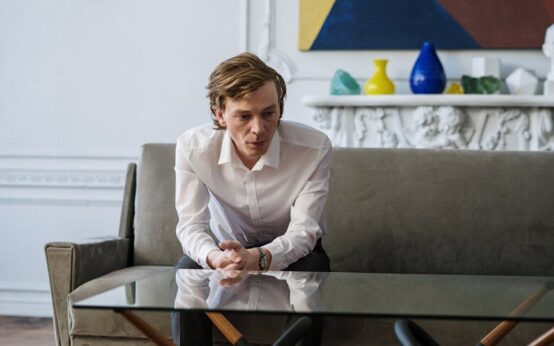More Than Just Water: An Ode to the World’s Greatest Fountains
There’s something universally captivating about a fountain. It’s a public space’s heartbeat, a symphony of light, water, and sometimes, music. We’re drawn to them. We toss coins in them, make wishes, and use them as meeting points. But some go far beyond being simple water features; they are masterpieces of art and engineering. This guide is a journey to find the world’s most beautiful fountains, exploring the stories and spectacles that make them unforgettable. Forget a simple trickle of water; we’re talking about grand, theatrical displays that define their cities.
Key Takeaways:
- Fountains are more than decorations; they are cultural landmarks that blend art, history, and engineering.
- From the Baroque grandeur of Rome’s Trevi Fountain to the high-tech choreography of the Bellagio in Las Vegas, the world’s best fountains offer diverse experiences.
- Many fountains serve as interactive public art, inviting participation through coin tosses, light shows, or even walking within them.
- The beauty of a fountain lies not just in its design, but also in its integration with its surroundings and the emotional response it evokes.
The Timeless Classics: Where History Meets Hydrology
Some fountains aren’t just beautiful; they’re living history. They’ve stood for centuries, witnessing the rise and fall of empires, and they carry the weight of that history in every sculpted detail and water drop. These are the grand dames, the icons that set the standard.
The Trevi Fountain, Rome, Italy: More Than Just a Coin Toss
You can’t start a list of the most beautiful fountains without mentioning the Trevi. It’s an absolute titan. Tucked away in a surprisingly small Roman piazza, the Trevi Fountain isn’t something you just stumble upon; it’s an event. You hear it before you see it—the thunderous roar of water echoing through the narrow streets. Then you turn the corner, and boom. It takes your breath away.
Completed in 1762, this Baroque masterpiece is less a fountain and more an entire wall of a palace that has exploded into a dramatic scene from mythology. At its center is Oceanus, the god of the sea, majestically riding a shell-shaped chariot pulled by sea-horses. One horse is calm, the other wild, representing the changing moods of the sea. It’s pure theater carved from travertine stone. The legend says if you toss a coin over your left shoulder with your right hand, you’re guaranteed to return to Rome. Judging by the crowds, it’s a tradition people take very seriously. It’s estimated that nearly $1.5 million is tossed into the fountain each year, all of which is collected and donated to charity. It’s more than a landmark; it’s an interactive piece of history.

Peterhof Palace Fountains, St. Petersburg, Russia: The Russian Versailles
If the Trevi is Baroque drama, the fountains at Peterhof Palace are a display of imperial power and playful ingenuity. Commissioned by Peter the Great to rival the Palace of Versailles, the Grand Cascade at Peterhof is simply staggering. It’s a sprawling complex of 64 fountains and over 200 bronze statues, all cascading down a series of terraces from the palace to the Baltic Sea.
The centerpiece is the magnificent Samson Fountain, depicting the biblical hero prying open a lion’s jaws, from which a 66-foot-high jet of water shoots into the sky. The symbolism was potent—it represented Russia’s victory over Sweden in the Great Northern War. What’s truly mind-boggling is the engineering. All the fountains operate without the use of pumps. The water flows downhill from natural springs, using gravity and a brilliant system of pipes and reservoirs designed in the 18th century. It’s a testament to incredible foresight and a beautiful blend of nature and human artistry.
Modern Marvels: Engineering a Spectacle
While the classics hold their own, modern engineering has pushed the concept of a fountain into a new dimension. These are fountains that dance, sing, and put on a show that would make even the Roman emperors jealous.
The Fountains of Bellagio, Las Vegas, USA: A Desert Oasis of Light and Sound
Las Vegas is the definition of ‘over the top,’ and the Fountains of Bellagio are its crown jewel. Situated in a massive 8.5-acre man-made lake on the Vegas Strip, this isn’t just one fountain but a choreographed ballet of over 1,200 water jets. Some can shoot water almost 500 feet into the air—that’s as high as a 45-story building!
What makes it truly magical is the performance. Every 15 or 30 minutes, the fountains come to life, perfectly synchronized to a diverse soundtrack ranging from Luciano Pavarotti to Lady Gaga. It’s impossible to stand there and not feel a sense of wonder. The water sways, pirouettes, and explodes in time with the music, illuminated by thousands of lights. It’s a completely free show that stops the entire Strip in its tracks. For a city built on artifice, the Fountains of Bellagio feel surprisingly, genuinely, beautiful.
The Magic Fountain of Montjuïc, Barcelona, Spain: A Symphony of Color
Built for the 1929 Barcelona International Exposition, the Magic Fountain of Montjuïc was an ambitious project for its time and continues to be a major draw. Located at the head of Avinguda Maria Cristina, with the stunning Palau Nacional as its backdrop, this fountain is all about a spectacular fusion of color, light, and motion. On show nights, the area transforms into a festival of the senses.
The fountain performs a ‘light and water show’ where its jets change shape and color in harmony with music. It’s a much more psychedelic and immersive experience than many other fountains. You’re not just watching; you’re surrounded by the atmosphere. Families, couples, and tourists gather on the steps, sharing the collective ‘oohs’ and ‘aahs’ as the water dances against the night sky. It’s pure, unadulterated joy in public art form.
Jet d’Eau, Geneva, Switzerland: Simple, Powerful, Iconic
Sometimes, beauty isn’t in complexity but in sheer, unadulterated power. The Jet d’Eau in Geneva is the perfect example. It’s not a sculpture. It’s not choreographed to music. It’s just one, massive, awe-inspiring column of water shooting 140 meters (460 feet) into the sky over Lake Geneva.
It began its life in 1886 as a safety valve for a hydraulic power network and was moved to its current location in 1891 to be a tourist attraction. And what an attraction it is. The fountain propels water at 200 km/h (124 mph), with about 500 liters (132 gallons) of water in the air at any given moment. On a clear day, you can see it from miles away, a brilliant white plume against the backdrop of the Alps. It’s a symbol of Geneva’s ambition, strength, and connection to the water that defines it. It’s proof that sometimes, the simplest idea can be the most powerful.

The Quirky and The Unforgettable: Fountains That Break the Mold
And then there are the fountains that defy categorization. They’re weird, wonderful, and utterly unique. They challenge our idea of what a fountain should be and leave a lasting impression precisely because they dare to be different.
“Fountains are the soul of a city square. They are the gathering points, the landmarks, and the places where memories are made. Their true beauty is measured in the smiles they create.”
Stravinsky Fountain, Paris, France: An Artistic Splash
Just a stone’s throw from the hyper-modern Centre Pompidou in Paris, the Stravinsky Fountain is a splash of pure whimsy. Created in 1983 by sculptors Jean Tinguely and Niki de Saint Phalle, this fountain is a tribute to the composer Igor Stravinsky. It features 16 bizarre and colorful sculptures representing his works, like a bright red pair of lips, a spinning mermaid, and a skeletal bird. These strange creations spray, spin, and spit water in a shallow basin, creating a playful and slightly chaotic scene. It’s a fountain that doesn’t take itself too seriously, and in a city full of grand, historic monuments, its cheerful absurdity is a breath of fresh air.
Swarovski Crystal Head Fountain, Innsbruck, Austria: A Sparkling Giant
Welcome to one of the strangest and most memorable fountains on the planet. Guarding the entrance to Swarovski Crystal Worlds in Austria is a giant, grass-covered head with two enormous crystal eyes and a mouth that spews a continuous cascade of water into a pool below. It’s called ‘The Giant,’ and it’s as surreal as it sounds. Designed by Austrian artist André Heller, it’s a fantastical piece of landscape art. You feel like you’ve stepped into a fairy tale—or perhaps a very strange dream. It’s certainly not classically beautiful, but its imaginative power is undeniable.
The Fountain of Wealth, Suntec City, Singapore: A Symbol of Good Fortune
Listed by the Guinness Book of Records in 1998 as the largest fountain in the world, the Fountain of Wealth is an icon of Singapore. It’s a massive bronze ring supported by four slanted columns, representing the harmony and unity of the four races in Singapore. The water flows inwards, a symbolic gesture representing wealth and life pouring in. During certain times of the day, the main fountain is turned off, and visitors are invited to walk around a central, smaller fountain, touching the water for good luck. It’s a fountain that’s deeply embedded in Feng Shui principles and cultural symbolism, making it much more than just a large water feature.
Buckingham Fountain, Chicago, USA: An American Allegory
One of America’s great fountains, Chicago’s Buckingham Fountain is a rococo wedding cake-style marvel located in Grant Park. It’s meant to allegorically represent Lake Michigan, with four sea-horse statues symbolizing the four states that border the lake (Illinois, Wisconsin, Michigan, and Indiana). When it’s running at full power, its central jet soars 150 feet high. During its evening light and music shows, it transforms into a dazzling spectacle against the city skyline. It’s a beloved Chicago landmark and a perfect example of the American ambition of the 1920s when it was built.
Conclusion
From ancient aqueducts to modern marvels of engineering, fountains are a testament to our enduring desire to tame and beautify the natural world. They are places of reflection, of community, and of pure spectacle. The most beautiful fountains aren’t just the biggest or the most ornate; they are the ones that connect with us on an emotional level. They make us stop, look, and listen. Whether it’s the historic grandeur of Rome or the quirky artistry of Paris, each one tells a story about the city it calls home. So next time you’re traveling, don’t just walk past the fountain. Stop for a moment. Make a wish. And appreciate the magic.



 Kneading Dough Therapy: A Baker’s Travel Guide
Kneading Dough Therapy: A Baker’s Travel Guide  Rediscovering Your City: A Tourist’s Guide to Home
Rediscovering Your City: A Tourist’s Guide to Home  Plan a Relaxing Getaway on Your Daily Commute
Plan a Relaxing Getaway on Your Daily Commute  The Digital Postcard: A Guide to Mindful Photo Sharing
The Digital Postcard: A Guide to Mindful Photo Sharing  Discover Serenity: 7 Peaceful Architectural Styles
Discover Serenity: 7 Peaceful Architectural Styles  Beat Museum Burnout: Enjoy Your Visit Without Exhaustion
Beat Museum Burnout: Enjoy Your Visit Without Exhaustion  Social Media on Blockchain: The Next Digital Frontier
Social Media on Blockchain: The Next Digital Frontier  What is a Flash Loan? A DeFi Deep Dive for Beginners
What is a Flash Loan? A DeFi Deep Dive for Beginners  Crypto Swing vs Day Trading: Which Style Wins?
Crypto Swing vs Day Trading: Which Style Wins?  A Guide to NFT Generative Art Platforms (2024)
A Guide to NFT Generative Art Platforms (2024)  Crypto’s Carbon Footprint: The Real, Nuanced Story
Crypto’s Carbon Footprint: The Real, Nuanced Story  Join a Web3 Community: The Ultimate Networking Guide
Join a Web3 Community: The Ultimate Networking Guide